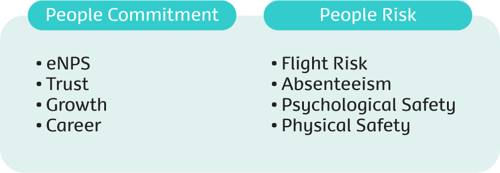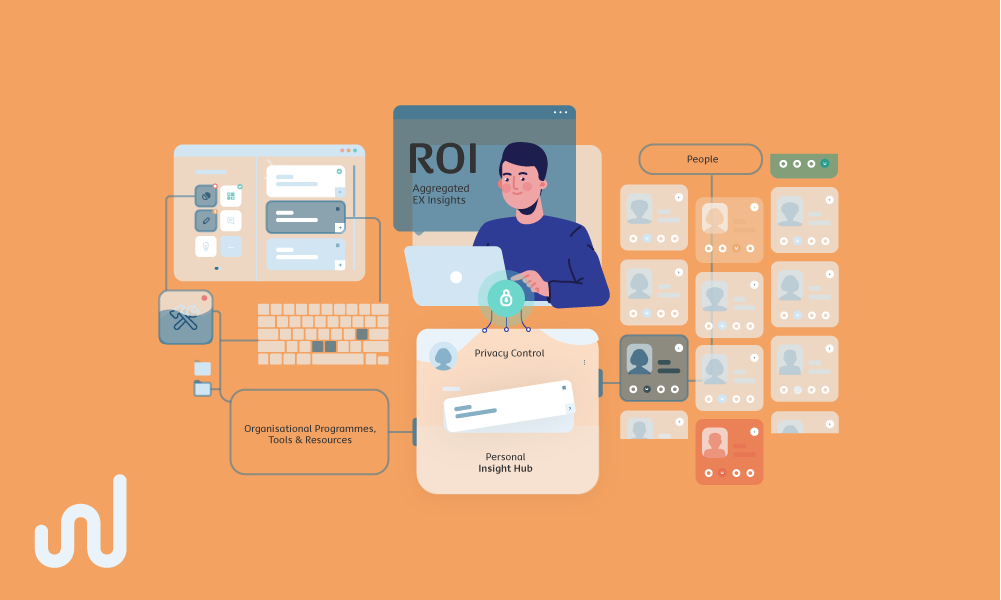How better science helps us to predict future outcomes and measure ROI
Blog Series 3/3 | Time to break away from ‘employee engagement’ and focus on ‘employee experience
Go back to Intro, Part 1 or Part 2
In this series of blog posts, we are exploring how Welliba EX+ (the first employee experience management system) offers a new approach to measuring and managing employee experience (EX) instead of focusing on traditional engagement approaches. Over the last weeks, we explored the new conceptual model for EX and our approach to combining data quality with employee ownership. This week we explain why EX+ can also help to predict future outcomes, when other approaches only help to understand current and past situations.
Employee experience has become a focal point because many current business problems are linked to employee productivity and wellbeing: organisations struggle to attract, develop and retain talent. Research has repeatedly shown that improving EX has a measurable impact on business outcomes related to these problems. There is a strong business case for managing EX, but not everyone has the data to support it.
Welliba has identified key business themes that are relevant for organisations across economic sectors and locations. These key business themes can be clustered into two areas: People Commitment (factors that make people feel and be committed to their company) and People Risk (factors that make people quit, become disengaged or feel unsafe). Each of the two areas is made up of several people metrics.

Welliba has thoroughly validated the effectiveness of the EX+ technology. Two large global samples of more than 2600 employees from different roles, organisations, countries and demographic groups were used to analyse the strength of the link between our EX model and relevant business outcomes. Regression and correlation analyses helped us identify how the Welliba model relates to the key business metrics that organisations are struggling to predict.
The results were more than statistically relevant, they were overwhelming. Our research indicates that for a global population when an employee’s Welliba score is high, they are:
- 10x less likely to quit
- 14x more likely to have a high employee net promoter score (eNPS)
- 5x less likely to take sick leave
Let’s take a closer look at ‘flight risk’: this theme refers to the likelihood that an employee will leave/quit their job. Failing to recognise such employees can cause businesses to suffer, so early detection of flight risk is crucial. For each of the key themes, we identified the most predictive drivers that influence these outcomes. For flight risk these are: purpose, focus, connectedness, team dynamics & culture, direct manager and top-down communication (senior leadership to employees).
The Welliba Dashboard™, which is part of EX+, gives employers an indication of the current level of flight risk among their employees, based on the data gathered via our EX measurement. Welliba Dashboard™ distinguishes between five levels of risk: high risk, risk, emerging risk, low risk and unlikely risk. We may assume that some leaders are able to correctly predict how high the flight risk is in their organisation; but that is not enough. Organisations also need data to construct a detailed understanding of why the flight risk is high, and who it is highest for.
A solution will have the biggest impact if it addresses the specific drivers for each team. For instance, when employees are reporting critically low levels of purpose, focus and connectedness at work, it is highly likely that they are experiencing a strong sense of discontent and dissatisfaction in their job. These employees are ‘high risk’. Identifying how patterns in employee data have an impact on business outcomes required extensive research. But now that we can identify these relationships, and measure them, every organisation can use EX+ to connect EX initiatives to its business outcomes.
This makes it easier for organisations to detect what initiatives are needed, to monitor their effect on EX, and to evaluate their ROI. Recent studies have pointed out that business leaders feel that the field of EX needs to become more mature and more data-oriented. This could, in turn, make EX professionals more accountable. It will be interesting to find out how leadership will evaluate the steps forward that their companies can take with EX+ to improve critical people outcomes.








